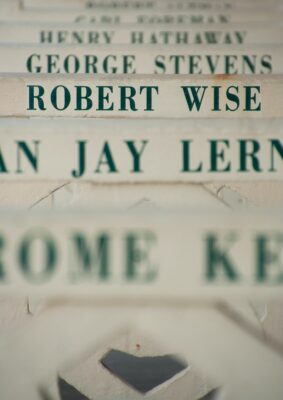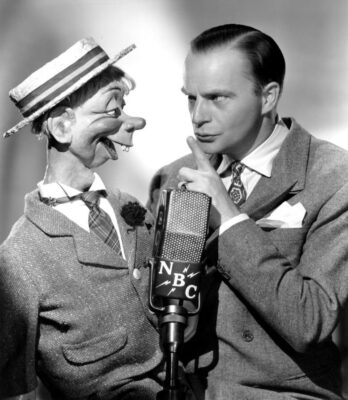 What’s in a name? That which we call a rose,
What’s in a name? That which we call a rose,
By any other name would smell as sweet.
Juliet, Romeo and Juliet 2:2
Perhaps, Juliet, perhaps, but your Romeo might have been bullied in school and a bit less heroic and far more introverted if his name had been Dilbert Dungbeetle.
Did you know that Sherlock Holmes was originally named Sherrinford Hope? Or that the iconic Holden Caulfield’s surname was lifted from a theater marquee and a film starring Joan Caulfield? Did you know that Herman Melville named Moby Dick was named after a real whale, Mocha Dick, often spotted near the Chilean island, Mocha? Hermione Granger was drafted into being as Hermione Puckle. While cute, it’s not as earthy or commanding as Granger. Please follow this link for a fun article with more name-relatetrivia.
One of the world’s most well-known authors, Charles Dickens, was famous for creating characters whose names suggested personality. Ebeneezer Scrooge just sounds like something wrung out of a filthy washrag; it so captures the essence of petty miserliness, that “a Scrooge” is a common slur.
Naming Characters: Some Examples
How does one name characters?
It depends on the situation, of course. If one is writing a Victorian-era story, one wants Victoria-era names – trot out Edwina, Charlotte, Pansy, Fannie, Charles, Albert, and Roderick. Writing about a Scandinavian woman? She’s going to have a Scandinavian name. Is your story set in New Orleans? Brush up on your history, or if you are there, visit a cemetery with a notebook and jot down names.
Speaking of cemeteries, there is a tiny island in the Chesapeake Bay called Tangier. It is less than two square miles and has been home to a handful of watermen for centuries. James A. Michener and his team had to do their homework to get the names right for Chesapeake. No room for error there. There, if the last name isn’t Crocket, Pruitt, Thomas, Eskridge, Dise, Evans, Shores, or Parks, then he/she never lived on Tangier.

I’ve been shopping around a dystopic, Kafkaesque short story about an aging bicycle messenger named Morty. The name came easily to me, with thoughts of mortal/mortality and Mortimer being on the nerdy side, thank you Edgar Bergen and Mortimer Snerd. To my surprise, in a kind rejection notice, the editor commented that he didn’t like Morty; it sounded old-fashioned and therefore not credible. Oh? O-kay. I’m not changing it. He’s my Morty, through and through; I can’t think of him as Jason or Bradley. He’s Morty the messenger.
Thinking of names, I remember seeing the film “Sabrina” as a child. Humphrey Bogart played a chauffeur named Linus. Linus, by the way, means “flax” in Greek. Of course, as a child, I had Linus, the Charles Schultz Peanuts cartoon character Linus in mind. I remember staring at the screen. Linus? Humphrey Bogart named Linus? A chauffeur named Linus? No…that can’t be right. It seemed a highly unusual and ill-fitted name.
How to Name Characters
My cozy mystery series features an albino* known as Haint Blue.
How’d I come up with that? I had just read a mystery novel about a detective who was missing a leg. I wanted my character to have some distinctive physical characteristics. Something I could remember, write easily, relate to. Well, I’m low on pigment, have had some wicked sunburns in my day, so hey, let’s make the character an albino. I understand shunning the sun, and I’m nearsighted. (Albinos tend to have poor vision.) She’s like me in many ways, so add Polish background, but let’s add Russian, too. Real name Helena Blonichova, but they call her a haint (ghost) because she’s so pale she’s luminous. But hang on! She’s in Florida. The South. Haint blue is a Southern thing, a color spectrum in the slate blue to periwinkle side of the color wheel. In South Carolina, Georgia and Louisiana, the porches of homes were often painted haint blue to ward off spirits. Ghosts purportedly didn’t cross water. Blue has all sorts of associations from the deep blue sea to moodiness to blues music. It has depth and layers. Okay, scrap Blonichova! We go with Bluszczski instead– now she’s “Haint Blue” because no one can pronounce Bluszczski.
I’ve also named characters after friends. In Haint Blue Christmas, there is a zombie bell choir. Very minor characters, but their bell-ringing show is hilarious. I needed seven names; I picked seven friends. Wendy, for one, is named after WAG founder Wendy Thornton.
How Do You Find Names for Characters?
How do you name your characters? Do you search for baby names of a certain decade? Pull names from film credits? Wander a cemetery with a notebook? Nod to favorite authors, actors, historical figures? Looking for a certain sound, smooth or guttural, like Gwendolyn Glimmermore or Chuck Brick? Implied meaning? Stoney Chalk is probably gritty, hard, unfeeling, dry, humorless, while Ezmeralda Lammermoor likely has a Pekinese in her purse, only wears high heels, and is working on husband number four. Her hobbies are going on cruises, maxing out credit cards, and gossiping.
It’s okay to use commonplace names. Anne, Susie, Tom, Harry. Reade can easily remember them. How often do you find yourself in a room with Carlisle, Alphonse, Peoni, Bradford, Jazzmeena, and Luxor?
Some Advice
One word of advice I’ve heard from others. Make your character names distinct from each other. You don’t want a Mary, a Mindy, a Mandy, and a Millie in the same novel. Make it easy for the reader to keep the characters straight. Don’t include multiple characters with multiple nicknames that don’t even sound like the original name. If Millicent goes by Millie, fine, but don’t also add in Rowena who is known as Boo, Robert who goes by Buck, and Winton who goes by Winner, not to be confused with his father Winton Jay. Don’t do it!
I have been known to chuck a book across the room if there are too many characters introduced at once. I need time to get to know them. Sort them. Yes, I overloaded It’s a Haint Blue Christmas with characters to suggest that the retreat is overflowing with guests and non-stop chaos. Some are major characters; many just have funny cameo appearances. I added a character list on the first pages.
 A Question
A Question
What are your favorite character names from books or films? Tell us in the comments below!
In the meantime, check out “How to Choose Character Names” from the New York Times Book Editors and Writer’s Digest’s “The Seven Rules for picking Names for Fictional Characters.”
*In today’s literary climate, much discussion surrounds correct usage for concepts once defined by words now sometimes deemed insensitive. So “a person with albinism” might be a better choice over “albino,” but even people with albinism are split on the topic, as stated in this article, “Is Albino a Derogatory Word?” The author’ of the article has a son wit Oculocutaneous Albinism (OCA).
[Editor’s note: WAG would love to see articles on any and all topics of interest to writers. Please send your ideas or finished pieces to Cynthia D. Bertelsen at BlogEditor@writersalliance.org for consideration. Remember: these posts are more than just posts, for they are actual articles and can be cited in your CV/résumé in the same way you would a short story, essay, or any other writing credit you may possess.]

Jenny Dearinger
Excellent! In children’s books for the very young it’s often best to keep the names simple. Usually the name of the animal will do. (Donkey, Lion, etc.) Sometimes naming the character by a trait works. (Slither the Snake, Croaker the Frog, Buzz the Bee, etc.). And a lot of children’s book names have alliteration. (Peter Pan, Brown Bear, etc.)
Thank you, Jess!
Mary Bast
Thanks for an interesting article. I SO agree with your comment, “I have been known to chuck a book across the room if there are too many characters introduced at once.”
By the way, I did question the term “an albino,” and in the link you provided on albinism, I think the first two options on the bulleted list are clear and easy to follow:
*emphasize the people, not the labels,
* don’t refer to people by a disease or disorder, this way you are not focusing on the particular functional limitation but on the individual themselves.
Bonnie T Ogle
Thanks, Jess. You’re so creative, it’s fun to get some insight to your thought processes!